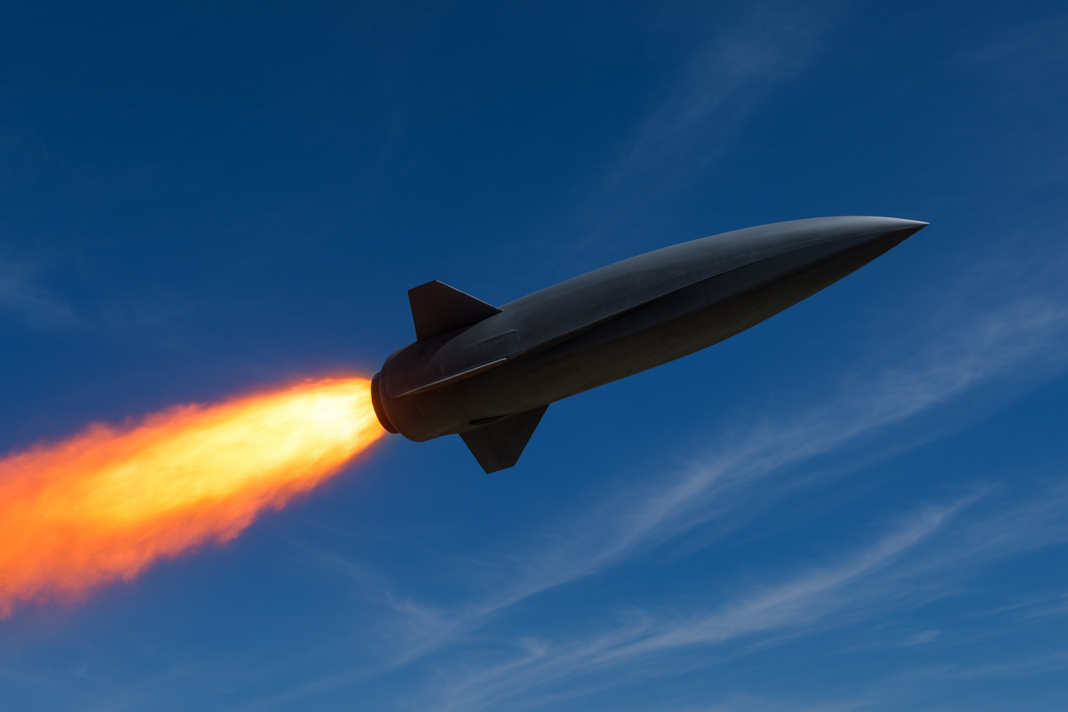As part of its conventional prompt global strike program, the United States has been developing hypersonic weapons for almost 20 years. In simple terms, these are weapons that can travel at least five times faster than the speed of sound, making them extremely difficult to stop.
Expanding Hypersonic Weapons Programs Across Military Branches
Hypersonic weapons can maneuver while in flight, unlike conventional missiles, hence their trajectory is not straight or predictable. This ability makes them very hard to detect or intercept using today’s defense systems. They fall into two main types: glide vehicles, which rockets launch before they glide toward their targets, and cruise missiles, which advanced scramjet engines power.
In recent years, the U.S. has invested more money and resources into hypersonic weapons research and development. The Pentagon and Congress have both increased funding because Russia and China have already tested and deployed such systems. Several U.S. military branches are now running their own programs to catch up.
The Navy is leading the charge on the Common Hypersonic Glide Body and will combine it with a booster to form a whole missile system. It plans to deploy this system on Virginia-class submarines and Zumwalt-class destroyers. After a few setbacks, the Navy conducted successful experiments in 2024 and 2025.
🚀 From Minsk to Mariupol: Belarusian Tech Found Inside Russia’s Hypersonic Weapons
The Army developed Dark Eagle, its Long-Range Hypersonic Weapon project, which it anticipates will reach targets almost 1,700 miles away. It has already delivered prototype equipment and aims to field more batteries of these hypersonic weapons in the next few years.
The Air Force has worked on different projects, including the Air-Launched Rapid Response Weapon, which struggled with test failures. Now, it is focusing on a new system called the Hypersonic Attack Cruise Missile, with increased funding in upcoming budgets.
DARPA, the U.S. research agency, has also contributed by running several experimental programs. These have provided useful technology that is feeding into the larger hypersonic weapons projects across the military.
Technical Challenges in Hypersonic Weapons Development
Hypersonic weapons are very hard to build. Unlike Russia and China, the United States has chosen to design them without nuclear warheads. That means these missiles must be far more accurate because they cannot rely on the massive blast effect of a nuclear weapon. This makes the technology more complex and slower to develop.
Testing hypersonic weapons is another major challenge. To properly test them, facilities must be able to recreate conditions at extreme speeds and temperatures above Mach 8. For a long time, no U.S. facility could do this. Even today, there are only a limited number of wind tunnels and testing ranges that can handle such conditions.
South Korea is Emerging as Weapon Superpower with KF21 Aviation Engine Technology
To deal with this problem, the U.S. has expanded its testing capacity and also partnered with other countries like Australia and the United Kingdom. Joint projects such as HyFliTE have allowed shared use of testing facilities. However, official reports still say that testing ranges are not enough to meet the high demand for experiments and flight trials.
Despite the challenges, some progress has been made. The Navy successfully carried out “end-to-end” tests of its hypersonic missile system in 2024 and 2025. The Army has already placed some of its prototype launchers in the field, though there is still limited data about how well these hypersonic weapons would perform in real combat situations.
Defense Against Hypersonic Threats
While developing offensive systems, the United States is also working on ways to defend itself against hypersonic weapons. The problem is that current radar and satellite systems cannot track weapons flying this fast at low altitudes. Space-based sensors also detect hypersonic missiles less easily because they appear much dimmer than regular missiles.
The U.S. Missile Defense Agency is trying to close this gap. It is launching new projects like the Glide Phase Intercept, a sea-based missile interceptor that it is developing with Japan. This program aims to stop hypersonic weapons during the middle of their flight. Another key project, the Hypersonic and Ballistic Tracking Space Sensor system, would use satellites to follow these fast-moving weapons more closely.
Some experts have noted that systems like THAAD, which currently protect limited areas, could be upgraded to defend against hypersonic threats. However, these systems can only guard small zones and cannot practically cover an entire country.
China warns of military muscle flexing after US Dark Eagle hypersonic missile arrives in Australia
In January 2025, officials signed an executive order called “The Iron Dome for America” to speed up the development and deployment of space-based sensors. The U.S. has already invested billions of dollars in these defense measures, though builders still face significant challenges.
For now, the U.S. continues to expand both its offensive hypersonic weapons programs and its defensive systems. It has already spent billions, and agencies are conducting new tests regularly. Despite these efforts, experts do not expect the United States to have an operational hypersonic weapon before 2027, while China and Russia already field such weapons.

